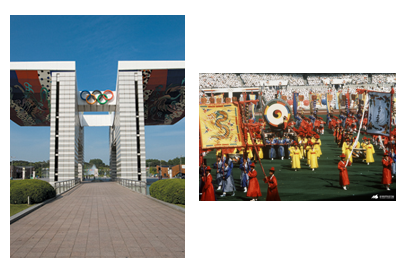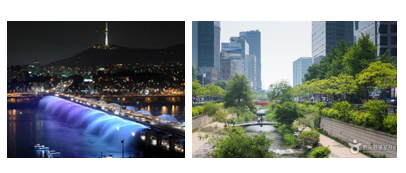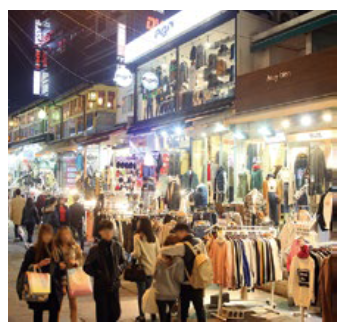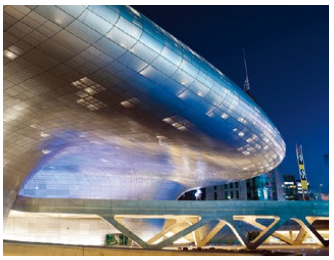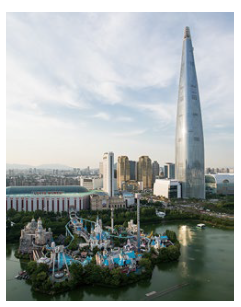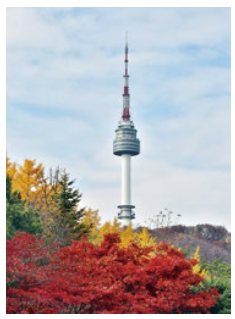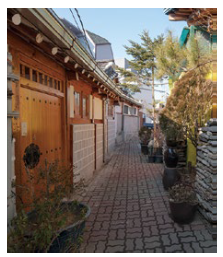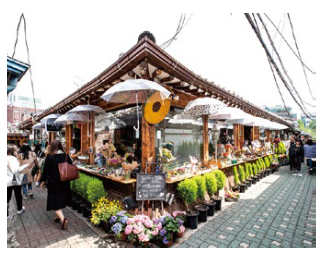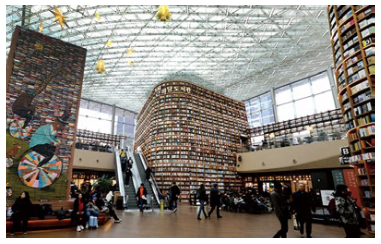Korea’s First Largest City

Seoul is the capital of the Republic of Korea and was formerly the capital of Baekje and Joseon. It was called Wirye Castle, Hansan, Hansung, Hanyang, Yangju, Nanjing, and Gyeongseong depending on the times. As can be seen from the prehistoric residence in Amsa-dong, Seoul has been inhabited since the Neolithic period, and has a history of about 2,000 years through the Three Kingdoms Period, Goryeo, and Joseon.
It is located in the center of the Korean Peninsula and spreads north and south with the Han River in between. It is new every day to travel to Seoul, where the past and the present coexist and change day by day. Seoul, where you can tour the large and small towns of art and culture that lead the trend of Korea along with the beautiful old palaces with 600 years of history in the middle of the city, is an optimal place for urban travel.
Symbolically showing the development of Seoul and South Korea is the hosting of the 86 Seoul Asian Games and the 88 Seoul Olympics. Despite difficult conditions such as the division of the two Koreas, the competition was completed successfully and was able to show off its upgraded status to high growth since the 1970s to the world. In particular, the 88 Olympics was selected as the host country with overwhelming support of 52:27 after Seoul and Nagoya of Japan competed. As South Korea and Japan jointly hosted the 12th World Cup in 2002, the world's attention will be drawn back to Seoul. South Korea surprised the world by beating world powerhouses Italy and Spain to advance to the semifinals, and the enthusiastic support of the "Red Devils" cheering squad impressed the world.
It is Cheonggyecheon Stream that shows the change of Seoul. Cheonggyecheon Stream, which was completed in 1760, was a boundary line between Namchon and Bukchon and a living ground for ordinary people. During the Japanese colonial period, the Japanese Government-General of Korea covered Cheonggyecheon Stream from Sejongro Intersection to Mugyo-dong to use it as a transportation route for continental invasion, and it was neglected after liberation and confusion such as Korean War. As garbage and dirt piled up in Cheonggyecheon Stream, the Seoul Metropolitan Government decided to cover it and proceeded with sequential cover from Gwanggyo to Sindap Railroad Bridge. However, as Seoul developed further, it placed greater value on culture and environment than development and growth, and after removing the covered roads and restoring Cheonggyecheon Stream from July 2003, Cheonggyecheon Stream was officially restored on October 1, 2005
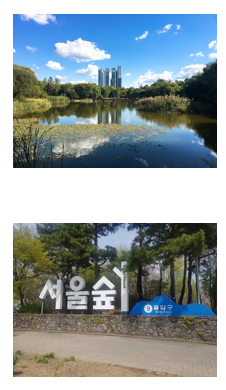
In the 21st century, city-to-city competition will be fiercer than state-to-state competition. Accordingly, in order to become a central city in Northeast Asia, Seoul has designated international finance and business industries, information and communication, digital content, fashion industries, and bio industries as five strategic industries and is intensively fostering them. The Seoul Metropolitan Government continues to evolve for a livable environmental city, and in June 2005, Seoul Forest, a large park measuring 1.15 million square meters, opened.
Currently, Seoul City is judged to have some aspect of an international city, and in the 21st century, it is Seoul's vision to become a world-class city in all fields such as culture, environment, welfare, and economy. The top city pursued by the Seoul Metropolitan Government refers to a warm city full of human scent, a pleasant and comfortable green city resembling nature, a vibrant city containing the world, and a long history and culture city.
Weather in Seoul
Seoul is the capital of the Republic of Korea, with Bukhansan Mountain, Dobongsan Mountain, Bukaksan Mountain, Inwangsan Mountain, and Ansan Mountain to the north, and Suraksan Mountain and Bulamsan Mountain to the northeast after Dobongsan Mountain. Achasan Mountain is located in the east of Seoul, Samseongsan Mountain and Cheonggye Mountain are located in the south, and Namsan Mountain is in the center. The west side of Seoul is an extension of the coastal plain starting from Incheon, and the altitude is gradually increasing as it comes to the east. The lowest altitude in Seoul is about 10m, and the altitude in densely populated areas is about 15 to 60m. The Han River flows through the center of Seoul from east to west, and Jungnangcheon Stream, Cheonggyecheon Stream, Hongjecheon Stream, Bulgwangcheon Stream, Tancheon Stream, Anyangcheon Stream, and Yangjaecheon Stream, which are tributaries of the Han River, are distributed throughout Seoul.
- 1) The average annual temperature is 12.8℃. The coldest month is January, -1.9℃, the hottest month is August, 26.1℃, and the annual temperature difference is 28.0℃, which is very large.
- 2) The average annual precipitation is 1417.9mm, with the lowest precipitation in January at 16.8mm, and the highest precipitation in July at 414.4mm. The sum of precipitation in summer (June, July, and August) is 892.1mm, accounting for about 63% of the annual precipitation, and the proportion of precipitation in summer is very high among the total precipitation. On the other hand, the total precipitation in winter (December, January, and February) is 67.6mm, which is about 5% of the annual precipitation.
- 3) The average annual wind speed is 2.3 m/s, and the average monthly wind speed is the lowest at 1.9 m/s in September and the highest at 2.7 m/s in March and April.
- 4) The average annual relative humidity is 61.8%, the lowest at 54.6% in February and March and the highest at 76.2% in July. The average relative humidity in summer is 71.8%, and the relative humidity in spring and winter is 56.3%, which is relatively dry.
- 5) Seasonally observed average values are October 28 for the first frost, November 3 for the first ice, and November 20 for the first snow.
Representative places in Seoul
The Five Royal Palaces of Seoul
The five palaces of Seoul are royal palaces of the Joseon Dynasty and symbols of Korea’s
culture and history. Each palace has its unique charms: Gyeongbokgung Palace, the royal
residence; Changdeokgung Palace, a UNESCO World Heritage Site inscribed in 1997 with
remarkable beauty; Deoksugung Palace, a combination of Korean aesthetics and Western
architecture; Changgyeonggung Palace, now restored from the damages caused by
Japanese occupation; and Gyeonghuigung Palace, humble and simple.
· Gyeongbokgung Palace - 161 Sajik-ro, Jongno-gu, Seoul +82-2-3700-3900
· Changdeokgung Palace - 99 Yulgok-ro, Jongno-gu, Seoul +82-2-3688-2300
· Deoksugung Palace - 99 Sejong-daero, Jung-gu, Seoul +82-2-771-9955
· Changgyeonggung Palace - 185 Changgyeonggung-ro, Jongno-gu, Seoul +82-2-762-4868
· Gyeonghuigung Palace - 45 Saemunan-ro, Jongno-gu, Seoul +82-2-724-0274
Hongik University (Hongdae) Street
The heart of Seoul’s youth culture is this eclectic collection of cafes, restaurants, bars,
clubs, art markets, galleries, and shops. Its numerous alleys wind through the area, carrying
unique themes like clubbing, art, and murals (Picasso Street). Busking, performances,
events, and the powerful energy of youthful freedom draw numerous youths to the area,
especially on weekends.
· 160 Yanghwa-ro, Mapo-gu, Seoul +82-2-3153-8650
Seoul Forest
This interactive park is the first of its kind and has become a representative foreststructured
park made in collaboration with its citizens. In spring, the cherry blossoms
and tulips bloom and in summer, the ground fountain and water playground opens
for everyone to enjoy. Visitors can also participate in various eco experiences at the
Butterfly Garden, Deer Habitat, and Insect Garden. The Mirror Pond, Land of Giants,
and ginkgo tree forest are the perfect spots for beautiful photos. There are also various cultural and experience
events as well as picnics at the main grass field.
· 273 Ttukseom-ro, Seongdong-gu, Seoul +82-2-460-2905
Dongdaemun Design Plaza (DDP)
This cultural space and design platform is a hub of exhibitions, fashion shows,
conferences, and events both domestic and international. Its distinct curves and
mega-sized roof are a triumph of 3D asymmetrical architecture. This design,
which symbolizes Dongdaemun area in the state of flux, was designed by the
British Iraqi architect Zaha Hadid. The area includes Dongdaemun Market and
other interesting sights.
· 281 Eulji-ro, Jung-gu, Seoul +82-2-2153-0000
Seoul Sky & Lotte World
Perched from the 117th to the 123rd floors of Lotte World Tower, the tallest building in
Korea and the fifth tallest globally, Seoul Sky offers a 360-degree panoramic view of
Seoul from 500 meters above ground. The Sky Deck, a 478-meter-high observatory,
is registered in the Guinness World Records as the world’s highest glass-floored
observatory. Lotte World is a cultural attraction consisting of Lotte World Adventure
(indoor theme park), Magic Island (outdoor theme park), a shopping mall, and more.
· Seoul Sky - 300 Olympic-ro, Songpa-gu, Seoul +82-1661-2000
· Lotte World - 240 Olympic-ro, Songpa-gu, Seoul +82-1661-2000
N Seoul Tower
This broadcast and observation tower was opened to the public as Seoul Tower in 1980.
Standing at 236.7 meters upon the 243-meter-high Namsan Mountain makes this tower 479.7 meters above sea level in total. The observation deck at the top offers a 360-degree view of Seoul and dining services. Seoul Tower Plaza refers to B1 to P4, while N Seoul Tower refers to the observatory and transmission tower. It was designated as a Seoul Future Heritage in 2018.
· 105 Namsangongwon-gil, Yongsan-gu, Seoul +82-2-3455-9277
The Street in Front of Cheongwadae (the Blue House) & Seochon Village
The street in front of Cheongwadae (the Blue House) leads to Cheongwadae Sarangchae,
a fountain, Mugunghwa (Rose of Sharon) Hill, Yeonmugwan Hall, Daegogak Pavilion and
Yeongbingwan Hall. Thick trees on both sides surround the road, so one can take a walk
here while appreciating the beautiful flower beds under the shade of the trees. Seochon
Village refers to a village sitting to the west of Gyeongbokgung Palace. Old and new shops and hanok buildings (traditional Korean houses) sit together in harmony.
· The Street in Front of Cheongwadae Gungjeong-dong, Jongno-gu, Seoul +82-2-120
· Seochon Village 45 Pirundae-ro, Jongno-gu, Seoul +82-2-2148-1114
Ikseon-dong
This urban hanok village was created in 1920s and 1930s as a common people residential complex. Unlike the hanok villages of Bukchon or Seochon, the houses here tend to be smaller and humbler. Today’s Ikseon-dong is a quirky collection of cafes, restaurants, and shops, mostly with retro aesthetics, and its popularity spread like a wildfire following the newtro revival among the youths.
· Ikseon-dong, Jongno-gu, Seoul +82-2-2148-1114
COEX (Starfield)
COEX is a cultural center housing shops, film theaters, an aquarium, a large bookstore, and a library. Starfield Library in particular is a beloved location for photo ops for its two-story, 13-meter-high bookstores. It is designed as an open space of communication through books, and it hosts many literature-themed cultural events.
· 513 Yeongdong-daero, Gangnam-gu, Seoul +82-2-6000-0114

